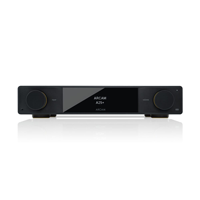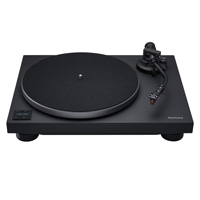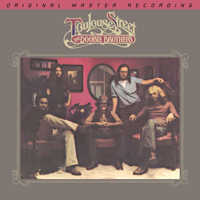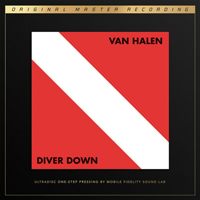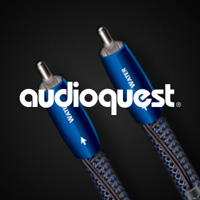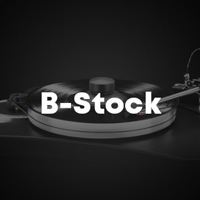I met Ken Kessler just a little more than 20 years ago. Honestly, I felt a little intimidated the first time we were face to face. I had been reading him for many years and knew he was a bit of a curmudgeon. I also knew he was a Beatles fanatic, tremendous LP lover/collector, wristwatch connoisseur, and someone with opinions about anything and everything.
What struck me immediately about Ken was his strong desire to help our industry grow. He had dedicated his life to the pursuit of audio excellence, and his desire to make his love for music and great sound proved as contagious as any virus. (Too soon? Ken never shies away from anything in his writing, so I'm not going to here.) And Ken was funny. Sarcastic. Rude, even. But truly funny. He would always tell you exactly what he thought. Yet behind the know-it-all attitude and his searing sense of humor (and political opinions) is a man who truly cares about what he does and the people around him.
Over the years, I have been fortunate to call Ken a friend. We see each other at hi-fi shows and try to spend as much time together as possible. He has taught me so much about the high-end audio industry and the people in it. And since he remains among our industry's most prestigious audio reviewers, his experience with the world's finest gear is practically unmatched. He has recently become more enamored than ever of the sonic virtues of reel-to-reel tape, and I continually hear stories about his fabulous record collection. Analog sources are his thing, but it doesn't stop him from enjoying great digital.
Until CES abandoned its support of high-end audio, Ken had arranged a private annual dinner at the start of the show. Those lucky enough to get invited were treated to an interesting evening of discussions, imbibing, and over-eating. I'll just say that dinners with Ken and Michael Fremer didn't leave a lot of room for others to speak, but they were always fun. Sadly, CES is a shell of its high-end self (even though our industry that gave it its beginning), and these storied dinners now live on in memory only.
If you ever have the good fortune to run into Ken at a hi-fi show, try to get a story out of him. He knows where the audiophile bodies are buried, and he might be willing to share a tale or two, depending on his mood. without further ado, it is my honor to introduce him as today's guest writer. His story of his first hi-fi system is fantastic.
My First System
By Ken Kessler, Renowned Hi-Fi News Reviewer/Anglophile/Horologist/Kvetch
Inspiration was everywhere, but not close to home. My father was a music obsessive, yet he neither knew nor cared about hi-fi. He was an amateur tape recordist back in the day when that meant swapping recordings. We lived in Portland, Maine, and his primary swappers resided in England, where austerity ruled the decade after WWII. He would record Glenn Miller LPs and send the tapes to a tape pal in England. While I wasn't allowed to use his weighs-a-ton mono Concord tape deck, what I did learn from him – even if he only had a Columbia record player that probably tracked at one pound – was never to touch the grooves on an LP.
Which explains why the albums I inherited – soundtracks, Frank Sinatra and Tony Bennett and Nat "King" Cole and so many big-band LPs that they almost seem a guilty pleasure – are close to mint. Hell, I could show you mono Louis Armstrong and Frankie Laine LPs so pristine, you'd swear they were new-old-stock and I was lying.
Come 1964, right after my 12th birthday, I made my first-ever LP purchase: Meet the Beatles. I was hooked on music. Always had been. But this was something else beyond my first 45 (the Crystals' "Da Doo Ron Ron") and not from the same universe as the old man's soundtracks. I had a Zenith record player that, amazingly, didn't destroy the LPs I'd acquired by the time I was able to purchase my first proper hi-fi in 1968, when I was 16.
Regardless of Solomon Kessler's aversion to hi-fi, my best friends' dads – ironically, owners of rival furniture stores – both had great systems because, in the mid-1960s, Fisher and others sold consoles through furniture stores. One friend's family rig included a Dual 1019 turntable in an all-Fisher setup. The other had a Rek-o-Kut turntable and AR3s. Still another friend's father had Sylvania separates because he worked in a store that sold them, and which weren't bad at all. My friends and I got interested in hi-fi at the same time. But I was in no position financially to keep up with them.
What Europeans do not appreciate about the U.S.A., at least the U.S.A. of the 1950s and 1960s, was that public schools meant a melting pot not just of races and cultures, but of financial classes. As the son of a base-earning postal worker, I was best buddies with a kid who got an Omega for his Bar Mitzvah and a BMW 2002 for his 18th birthday. Me? A Timex and a bare-bones Plymouth Valiant. Egalitarian or what?
With a job after school at Kentucky Fried Chicken, and thus the ability to get a bank loan, I walked into the local music instrument-cum-hi-fi store with zero knowledge of audio gear – but a fixation for a Dual 1019. I got royally screwed by a sleazy salesman who must have seen me coming a mile away. I got the turntable of my dreams. But he also sold me a Scott 344C FM receiver that I did not need because I never listened to radio, and a pair of Scott bookshelf speakers.
After-the-fact reality check: I could have had Dynaco or AR for less. The problem was I didn't know any audiophiles who could have steered me into something better for my $700, which took me two years to pay off. To illustrate what a ludicrous, ill-advised commitment I undertook, that amount is equal to $5,200 in today's money – a debt no sane 16-year-old would countenance.
Remember, I knew absolutely nothing about hi-fi. And yet, thanks to the magnificent instruction manuals supplied with the Dual and the Scott, I managed to install a Pickering cartridge (the schmuck at Eastern Musical couldn't even be bothered to do that) without breaking the cantilever, wired the speakers in phase, and put on the "Hey Jude" single. The system had to be deflowered with the Beatles, then, as now, my all-time favorite band.
It was a revelation, ignorance being bliss. I couldn't believe the difference between the sound of that setup and what came out of a clunky record player. Out came the first Buffalo Springfield LP, more Beatles, assorted Kinks releases. My parents had to pry me from my bedroom to which I was relegated in the evenings anyway when they wanted to watch TV downstairs and I had to switch to my Superex headphones.
Despite my hi-fi witlessness, I felt ecstatic. Within three years, I had moved onto a Pioneer PL12D turntable, Marantz 1060B amp, and ESS Tempest speakers. I was, by then, a fully infected audio casualty.
5th Jun 2020

